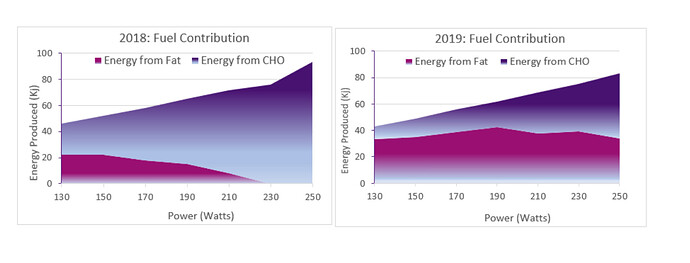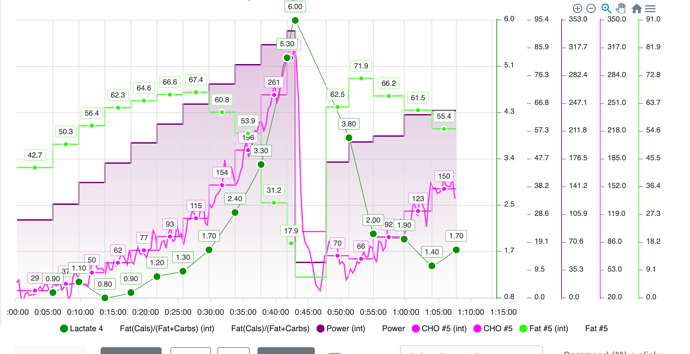Fat Max will always be tied very closely to LT1, but may not improve in everyone.
First this is how I define these metrics myself.
In the picture below, you will see ACTUAL fatmax is just after LT1.
I like to score fatmax as the highest amount of fat with the least amount of carbs, this spot is much easier to find in a test. You can not this by the sudden increase in carbs at fat max (keep in mind this is only during 4m of a step test, so in longer sessions, this is another reason I use the number I do).
You can also see that the lactate curve near LT1 and the Carb curve have an identical reaction.
So for me, fatmax tied by the pretty closely to LT1.
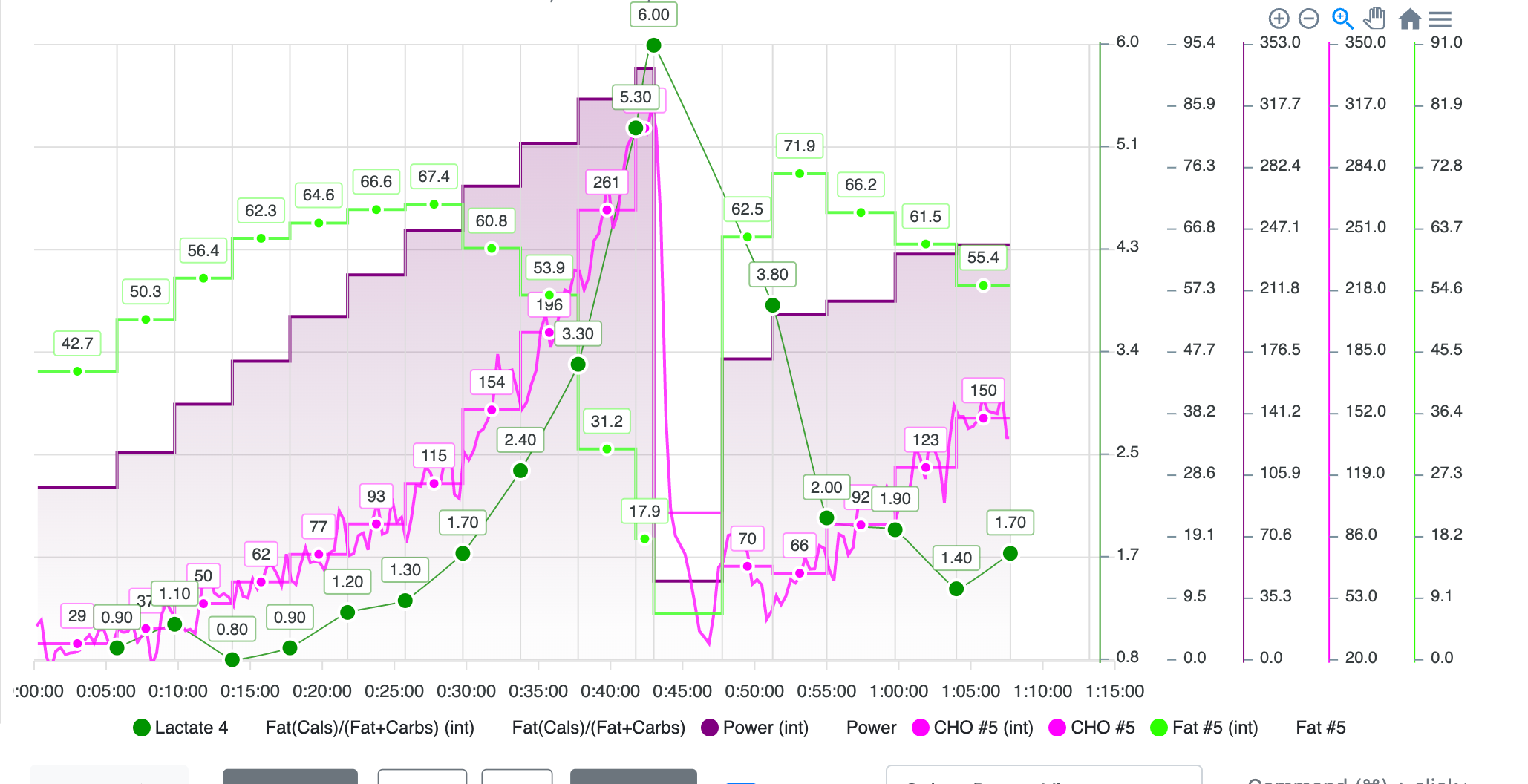
Below same pic with arrow at fatmax ceiling.
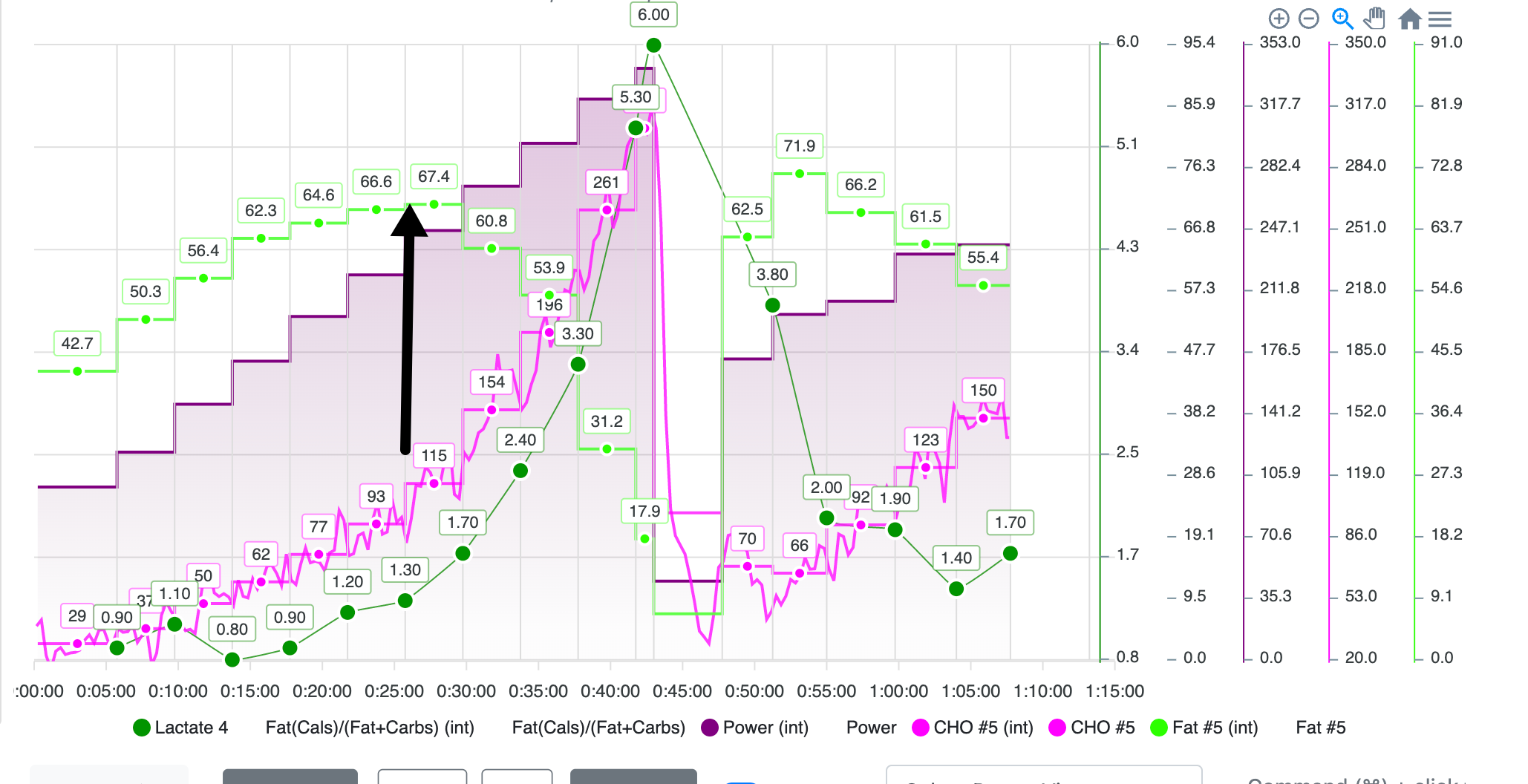
So what change is the % ratio of CHO and FAT, and as you utilize fat longer, this would be the flattening of the lactate curve after LT1 (less carb contribution after LT1 would be mean lower lactate measurements)
So below is the same athlete looking at FAT and CHO ratio out of 100%.
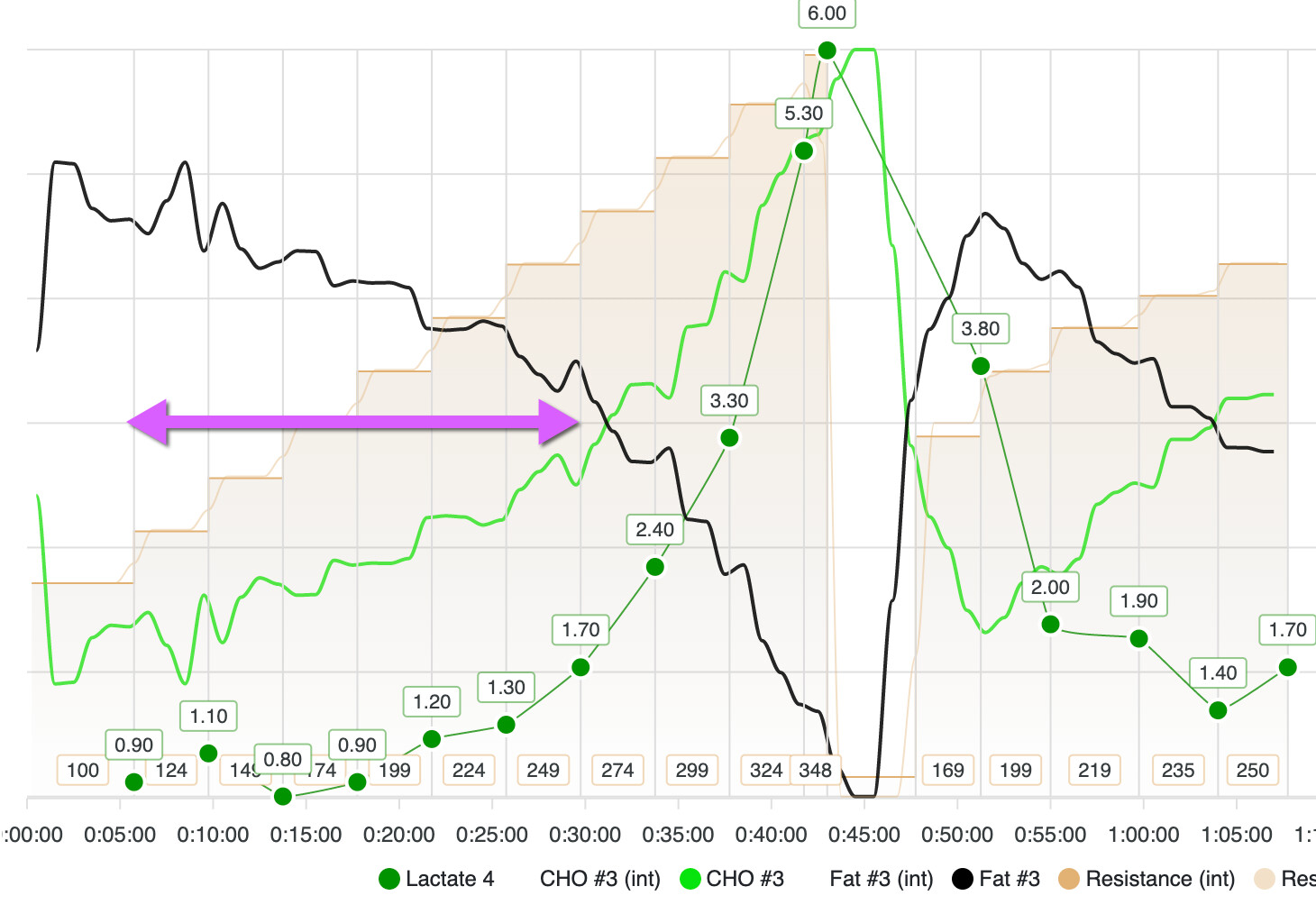
In an athlete with fat cho crossover to to the left, the lactates would be higher do to sooner fat cho crossover.
Below is an example of fat cho / near fat cho crossover, lower levels.
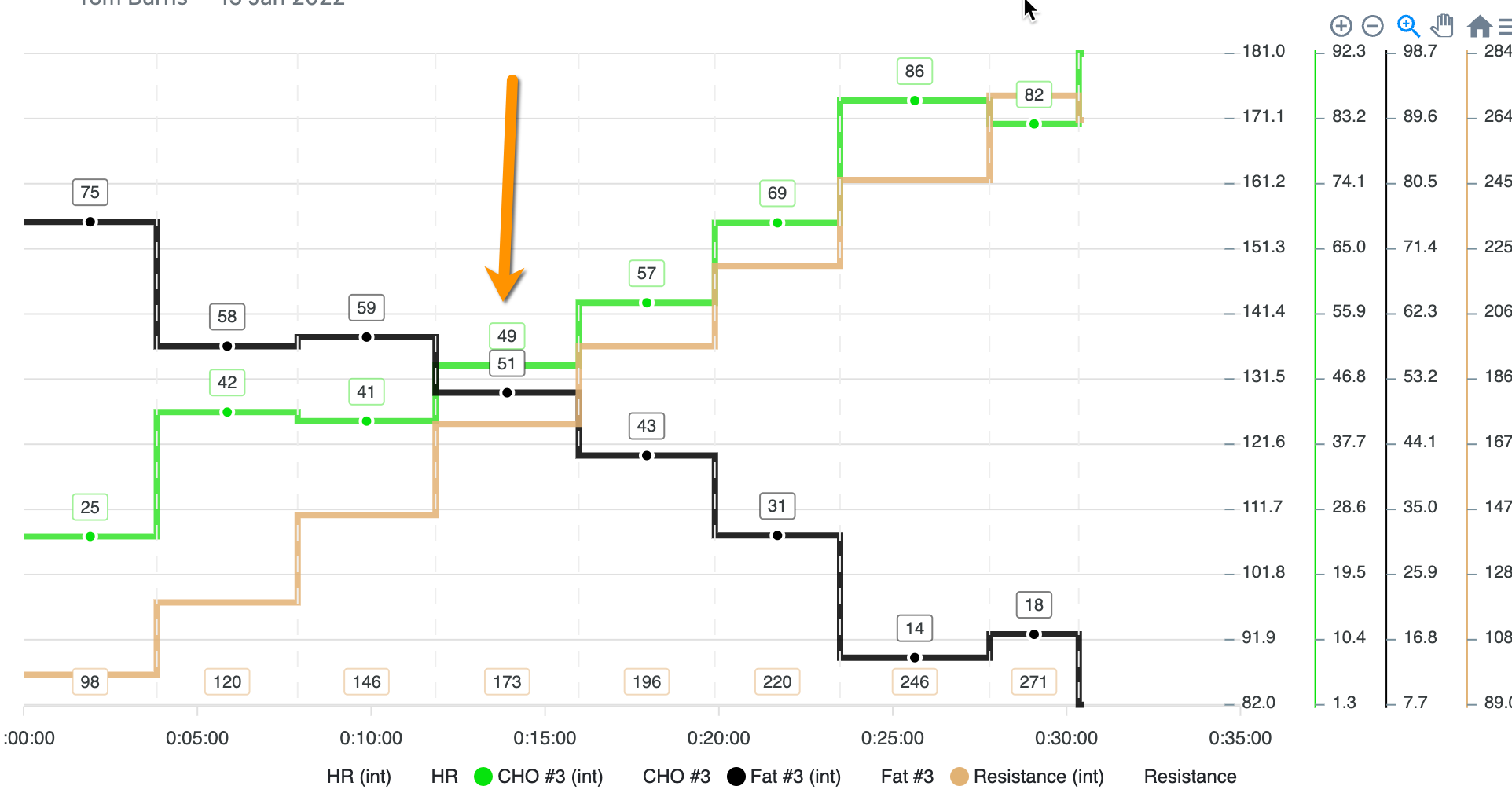
Fat Max same athlete
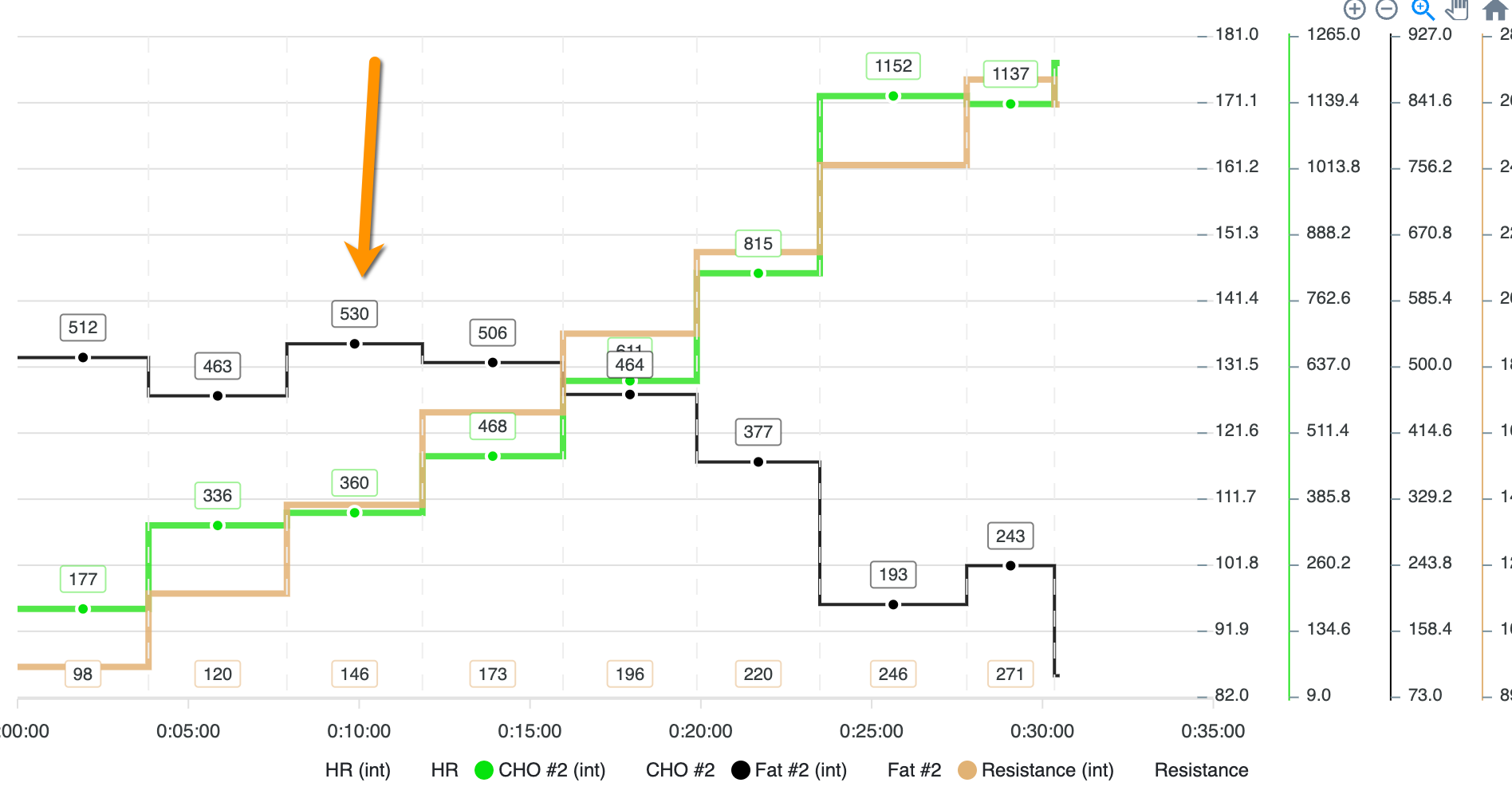
Comparing the two below.

Same protocol for both athletes.
If we look at the fatmax and crossover relative to map this is where the difference lies.
They would have different nutritional strategies (athlete one having a hard time fuelling long rides at endurance/tempo pace for sure, the other very different nutrition needs and much higher performance.
So to know fatmax improving, LT1 would move to the right.
So your fatmax could stay at 200w, but move crossover to the right, keeping map the same and you would likely be faster and improve in longer events.
Sorry for long answer hope I finally got to some points that make sense.






